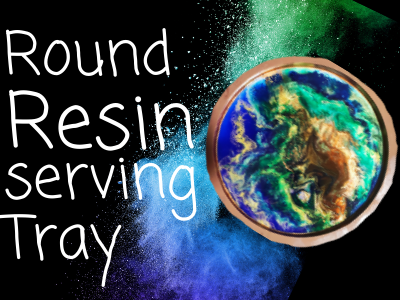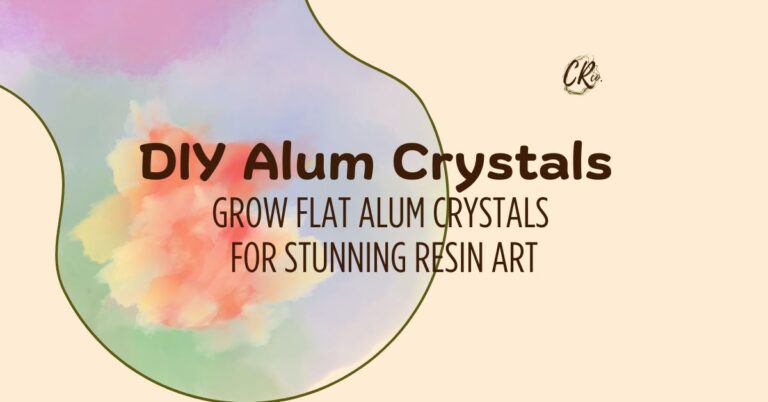Which UV Resin Should I Use?
UV Resin is a fascinating material that’s revolutionized the crafting game in many ways. Whether you’re a seasoned artisan or a curious beginner, understanding UV Resin could open up a whole new world of possibilities for your projects. Let’s get acquainted with this wonder material.
UV Resin is a type of synthetic resin that cures, or hardens, when exposed to ultraviolet light. It’s super versatile and popular in crafting, jewelry making, and even in small-scale manufacturing. Used correctly, it can produce beautiful, durable pieces in a fraction of the time it takes other materials to cure.
Knowing which type of UV Resin to use is like having the right key for the right lock. Different types can drastically affect your project’s outcome. There’s no one-size-fits-all here; it’s essential to match the resin with the specific needs of your project to get the best results.
So why does the choice matter so much? The wrong type could leave you with a tacky mess instead of a polished masterpiece. Imagine painstakingly creating a beautiful pendant, only to find it sticky or uneven because you didn’t use the appropriate resin. Yeah, let’s avoid that!
This section guides you through the initial steps of understanding UV Resin, setting you up for more detailed knowledge in the following sections. By the end, you’ll be better equipped to make informed choices and bring those shiny, fantastic creations to life.
This article explains the different types of UV Resin you have to choose from. Some of better than others for specific projects and some are much less of a headache to achieve a full cure with. Understanding this differences is crucial to choosing the perfect UV Resin for your project. However, if you are looking for an article that just discusses my top product recommendations, check out Best UV Resin For Crafts: Everything you Need to Know.
Types of UV Resin
UV Resin comes in two main types: Free-Radical and Cationic. Knowing the differences between them can set you up for crafting success. So, let’s break it down.
Free-Radical UV Resin is like the sprinter in the race of curing. When exposed to UV light, it starts a chemical reaction where small molecules link together to form a hard, cross-linked structure. This type cures quickly, but the curing process stops as soon as the UV light is removed. It’s fantastic for projects requiring fast results. However, one downside is that it might leave a tacky surface if not cured properly, especially if oxygen interferes.
On the flip side, we’ve got Cationic UV Resin, which functions more like a marathon runner. The curing process involves a UV light releasing a strong acid that acts as a catalyst. Once this reaction starts, you can remove the UV light and the curing will continue. This type of resin is great for projects with shadows or darker pigments since the curing doesn’t stop abruptly. It also tends to have less shrinkage.
Each type comes with its pros and cons. Free-Radical UV Resin cures fast but might stop abruptly and can be tricky with oxygen interference. Cationic UV Resin keeps curing even in shadows but requires a bit of patience. Picking the right type isn’t just about the resin itself; it’s about knowing your project and what you need out of it.
Free Radical UV Resin: How It Works
When it comes to speedy project turnarounds, Free Radical UV Resin is your go-to. This type of resin starts to cure immediately when exposed to UV light. The UV radiation triggers a chemical reaction where free radicals form and initiate the curing process. Small molecules in the resin link together, forming a rigid network. It’s almost like magic, but with a bit more science involved!
One of the standout benefits of Free Radical UV Resin is its quick curing time. If you’re working on something that needs to be done ASAP, this resin won’t keep you waiting. However, this rapid curing can be a double-edged sword. If your project has areas that are blocked or shadowed from the UV light, those parts won’t cure properly. This can leave sticky or soft spots in your otherwise hard masterpiece.
You should also be cautious about oxygen inhibition, which can leave a tacky surface on your project if not properly managed. Using the correct UV light source can minimize this issue. An enclosed UV light box often works best to ensure even curing. Keep this in mind if your project has intricate details or layers; all parts need exposure to UV light for a full cure.
In summary, Free Radical UV Resin is perfect for fast projects where you can ensure complete UV light exposure. It’s great for items like thin coatings or small jewelry pieces that don’t have complex shapes or shadowed areas. Understanding these quirks helps you get the most out of this type of resin, making it an invaluable tool in your crafting arsenal.
Cationic UV Resin: How It Works
Cationic UV Resin is a different beast altogether. Unlike Free Radical UV Resin, it doesn’t stop curing just because you turn off the UV light. The magic here lies in a strong acid that gets released when exposed to UV light, acting as a catalyst for the curing process. This means the reaction keeps going even after you remove the light source, making it super handy for projects with shadowed areas or darker pigments.
Cationic UV Resin tends to shrink less during the curing process, which is a major plus if you’re looking for that perfect finish. The continual curing is particularly useful for intricate or uneven projects where uniform exposure to UV light might be a challenge. Don’t think this means you can stash it in a dark corner and forget about it, though. It still needs some initial UV exposure to kick-start the process.
This type of resin excels in projects where you need a bit more flexibility with curing time. It’s less prone to surface tackiness and does a better job with deeper layers and complex shapes. While it may require more patience, the results are usually worth the wait. Think of it as the slow-cooking method in a fast-food world; it may take longer, but the outcome is often superior.
In practical terms, Cationic UV Resin is excellent for larger, more complex pieces or any project where achieving perfect light exposure is tricky. It can handle a bit more variety in your workflow, giving you some wiggle room to adjust and perfect your creation. If you’ve got a project with lots of nooks and crannies, this is likely your best bet.
Comparing Free Radical and Cationic UV Resin
Understanding the unique features of Free Radical and Cationic UV Resins sets the stage for making informed decisions in your projects.
Free Radical UV Resin shines in speed. It’s quick-curing nature is ideal when you need fast results and can ensure complete UV light exposure. Think thin layers or small, uncomplicated pieces. However, it can be finicky, struggling with oxygen inhibition and requiring full UV light exposure to cure fully.
On the other hand, Cationic UV Resin is your go-to for complexity and depth. This type cures even after the UV light is removed, making it perfect for intricate projects with hard-to-reach areas. Its lower shrinkage and continued curing process are assets, particularly for detailed work. However, it demands a bit more patience.
Choosing between the two often boils down to your project’s specific needs. Speed and simplicity? Free Radical is your friend. Complexity and depth? Cationic has your back. Each type caters to different project requirements, arming you with the flexibility to achieve the best possible results.
When deciding, consider factors like curing speed, exposure to UV light, the intricacy of the design, and the potential for shadowed areas. Free Radical may offer quick gratification, but Cationic brings lasting reliability for more complex tasks.
Knowing these differences helps tailor your choice to your project, ensuring you get the ideal finish every time.
Exploring Hard UV Resin
Hard UV Resin plays a crucial role when you need your creations to be sturdy and durable. As the name suggests, once cured, this resin forms a rigid and tough surface that can resist wear and tear. It’s perfect for items that will see a lot of handling or need to maintain their shape like keychains, phone charms, or even structural components in small-scale builds.
Using Hard UV Resin ensures that your pieces hold up over time, providing a solid finish. This type of resin is typically cationic, benefitting from the ongoing curing process, which reduces shrinkage and increases durability. The end result is a robust, high-quality product that withstands everyday use.
However, a key point to remember is that because Hard UV Resin results in a rigid structure, it might not be the best choice for items that need some flexibility. Trying to bend or stress these cured pieces too much might cause them to crack or break. Therefore, assessing the final use of your product is essential before opting for Hard UV Resin.
Practical tips for using Hard UV Resin include ensuring even UV light exposure to avoid uncured spots and incorporating multiple thin layers for better curing. A high-quality UV light source can significantly enhance the curing process, delivering a smooth, hard finish.
For those looking to produce durable and long-lasting items, Hard UV Resin is a top pick. Its toughness and reliability make it a staple in crafting durable accessories and components, ensuring your creations not only look good but also last long.
Exploring Soft UV Resin
Soft UV Resin offers a unique flexibility that makes it perfect for projects requiring a bit of give and movement. Once cured, this type of resin remains pliable, adding an element of softness to your creations. It’s the ideal choice for crafting items like badges, soft jewelry pieces, or anything that benefits from a gentle bend.
Unlike Hard UV Resin, the flexible nature of Soft UV Resin means it won’t crack or break under stress. It’s great for items that need to be resilient and comfortable to wear or use. You can also incorporate it into mixed-media projects where a flexible layer enhances the overall design.
Working with Soft UV Resin requires a different mindset. Think about layering to build up strength while retaining flexibility. Since it’s often a cationic resin, you’ll still benefit from continuous curing even after the UV light is removed, so worry less about those shadowed sections. The key is to apply thin layers and allow each to cure thoroughly.
A tip for crafters: incorporate soft resin into your designs where you need some bend or comfort. It’s fantastic for items like wearable art because it adapts to different shapes and movements, making it both functional and stylish. Think of it like adding a touch of resilience to your work – form meets function in a creative mix.
In summary, Soft UV Resin is your go-to for flexible, resilient projects. It’s great for creating soft, wearable items, and brings adaptability to your designs without sacrificing durability.
Doming UV Resin: What You Need to Know
Doming UV Resin stands out due to its ability to create a raised, glossy finish on flat surfaces, giving your pieces a professional and polished look. This type of resin is particularly effective for projects like badges, pins, or any craft where you want a rounded, three-dimensional effect. It’s like adding a crystal-clear dome that not only enhances the visual appeal but also provides a protective layer.
The key characteristic of Doming UV Resin is its viscosity. It’s thicker than standard resins, allowing it to stay in place and form a high, rounded edge. This makes it ideal for coating decals, photographs, and even small paintings, adding a touch of class and durability.
Applying Doming UV Resin requires a bit of finesse. The resin needs to be applied carefully to avoid overflow, especially on items with defined edges. Using a dropper or a precision tip can help in controlling the application and achieving that perfect dome effect.
A helpful tip while working with Doming UV Resin is to ensure your working surface is perfectly level. Any slant can cause the resin to flow unevenly, disrupting the dome shape. A level surface ensures an even spread and a beautifully rounded top.
Remember that doming isn’t just about the look. The raised layer also serves as a shield, protecting your artwork from scratches and minor damage. This makes it a popular choice for items that will be frequently handled or displayed prominently.
In essence, Doming UV Resin is your best friend for projects where both aesthetic appeal and protection are desired. It adds that extra touch, making your creations not only stand out but also stay intact over time.
Tips for Coloring UV Resin
Coloring UV Resin can be a fun way to add a personal touch to your creations, but it comes with its own set of challenges. Not all pigments work well with UV Resin, especially opaque and dark colors. These can block the UV light, making it difficult for the resin to cure properly.
Using pigments designed specifically for UV Resin is highly recommended. These pigments are formulated to allow UV light to penetrate, ensuring an even cure. Adding the right amount is key — too much can hinder the curing process, while too little may not give you the vibrant color you’re after. Start with a small amount and gradually add more until you achieve the desired shade.
For those who love working with opaques, Solarez’s Dual Cure UV Resin can be a game-changer. This type of resin includes a catalyst that helps cure your project even if the UV light can’t reach through the dark pigments. It does have an odor, so don’t forget to follow the safety guidelines—like working in a well-ventilated area and wearing appropriate protective gear.
If you’re in a pinch or looking for convenience, pre-colored UV Resins are also available. These come pre-mixed with pigment, saving you the extra step of tinting and ensuring consistent curing. It’s a useful option for those who need reliable results without the trial and error of mixing colors.
For artistic flair, adding items like glitter or small flowers can be a great way to enhance your UV Resin pieces. Just remember, the smaller the added items, the easier they are to embed and cure effectively. Larger inclusions might require more attention and multiple layers to ensure everything is properly set.
If you experiment with different pigments and additives, you’ll quickly find what works best for your needs. Always test a small sample before committing to a large batch. This simple step can save you a lot of headaches and ensure your finished project looks exactly as you envisioned.
Why is my UV Resin Sticky After Curing?
Encountering sticky UV resin after the curing process can be frustrating and may arise from several factors. One common cause is oxygen inhibition, where the interaction of oxygen with the resin surface prevents proper hardening, leaving a tacky layer. Inadequate UV light exposure due to low intensity or insufficient curing time can also result in uncured resin, while incorrect mixing ratios—if using dual-component systems—can prevent full curing. Environmental conditions, such as high humidity and low temperatures, may further hinder the process. Additionally, employing a weak or poor-quality UV lamp that doesn’t emit light at the correct wavelength can limit curing effectiveness. Lastly, applying too thick a layer of resin can impede UV light penetration, and contamination from dirt or dust can disrupt the curing process. By addressing these issues, you can prevent sticky surfaces and achieve the desired hard, glossy finish in your resin projects.
For a detailed examination why your UV resin art is not curing properly, check out “Why is my UV Resin Still Sticky After Curing?” This article gives an in-depth explanation as to why your project may be sticky and some great tips on how to prevent sticky UV resin projects in the future.




